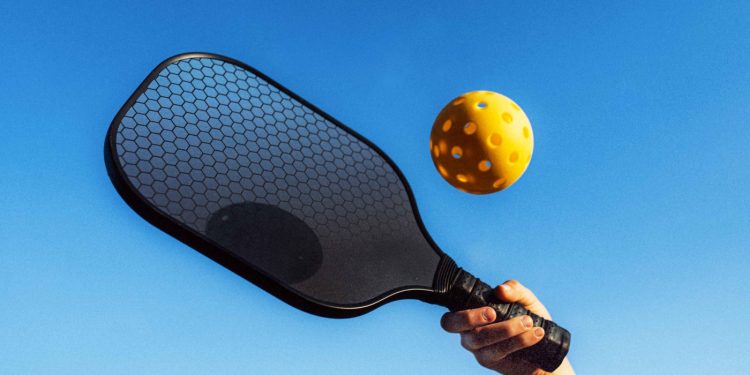A hand holds a paddle against a clear blue sky, preparing to hit a yellow pickle ball. The scene suggests a clear, sunny day, with the pickleball clearly in motion.
Stefania Pelfini la Waziya/Moment RF/Getty Images
hide caption
toggle caption
Stefania Pelfini la Waziya/Moment RF/Getty Images
Pickleball has quickly become a staple sport in the United States, with nearly 20 million people playing the sport.
But this popularity comes at a price. With more people on the court, pickleball-related eye injuries, including lacerations around the eye, corneal abrasions and inflamed irises, have increased. A study published this week in JAMA Ophthalmology estimates that the incidence of these injuries has increased significantly, increasing by approximately 405 cases each year from 2021 to 2024.
Researchers examined data from a representative population of patients in U.S. emergency departments to understand which pickleball players are particularly vulnerable to eye injuries and how they occur. From there, they estimated what those trends looked like nationally.

Given the “alarming” increase in cases of eye injuries, the study authors called for the development of standardized guidelines for eye protection, which can reduce sports-related eye injuries by up to 90%. Other sports such as squash have imposed such guidelines.
The study found that 70% of cases involved adults aged 50 or older. Dr. Natasha Desai, co-director of the Center for Women’s Sports Medicine at NYU Langone, was surprised by this finding because a large portion of sports-related injuries occur among young female players.
Desai, who was not involved in this study, doesn’t think the sport is necessarily becoming more dangerous. “More people are playing, so there will be more injuries and higher volume,” she says.
And there are many ways to get injured playing pickleball, notes Dr. Corey Lacher, resident ophthalmologist at Rutgers New Jersey Medical School and lead author of the paper, including being hit by the ball, a paddle or falling.
“A lot of people think that just because it’s a wiffle ball doesn’t mean they won’t get hurt,” he says. But it remains risky because “everything goes very quickly in pickleball and we play on a very small court”.
However, getting players to wear protective eyewear is easier said than done, as Desai points out. This is another piece of equipment that players must purchase and bring with them. And with so many options on the market, choosing a pair can be intimidating.
Players would benefit from standardized eye protection guidelines for pickleball, Lacher says. “There’s a pickleball eye protector for $10 and there’s a $160 one. How do you know which one to buy?”
If you’re shopping for glasses, Lacher and Desai recommend products made from shatterproof polycarbonate and those that meet the American Society for Testing and Materials standard F3164.
Dr. Daniel Henick, an ophthalmology resident at Yale School of Medicine and avid pickleball player, has studied which groups of players wear protective eyewear and why others don’t. He says one of the most common reasons players don’t use protective eyewear is because they aren’t aware of the risks.
Henick says having standardized guidelines, posting them outside courts for players to see, making eye protection more user-friendly and encouraging professional pickleball athletes to set an example for the influx of new players could help reduce injuries.
The document highlights that its limitations are having a small sample and relying on a database that only includes emergency services that agree to participate in data collection. But Lacher sees the main takeaway from the study as raising awareness about these injuries.
Henick agrees, pointing out that these injuries can sometimes be life-changing: “We’re talking about hundreds, if not thousands, of injuries each year that could be prevented with what could be a relatively simple intervention. »
USA Pickleball did not respond to a request for comment on the study’s call for eye protection guidelines.









